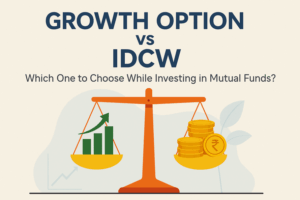SIP Calculator
×
10 best SIP plans for 1000 per month in 2025

Put simply, a systematic investment plan (SIP) is a method of investing in mutual funds, where a fixed amount of money is invested regularly in a specific mutual fund scheme. SIPs are popular among retail investors because they encourage investment discipline at a low cost. Affordable SIPs are especially relevant in situations when the Indian equity market is experiencing a rough patch, as in 2025.
However, it is important to understand that a mutual fund investment strategy that worked during a bull run might not be successful in a bear market. This blog post will list some of the best SIP plans for 1,000 per month in 2025. Let’s dig in.
What is SIP?
A Systematic Investment Plan (SIP) is a disciplined investment strategy that allows investors to invest a fixed amount of money regularly in a mutual fund scheme that matches their risk profile and financial goals.
The SIP approach helps to average the cost of investment over time, reducing the impact of market volatility. Furthermore, investors also benefit from the power of compounding. SIPs are possible even with small amounts, making them an excellent option for beginners and seasoned investors.
On the risk front, equity mutual funds carry the highest risk while debt mutual funds come with moderate to low risk. The risk factor for hybrid mutual funds ranges from moderate to high risk depending on the fund composition.
While investing in mutual funds through SIP is a great way to create wealth over time, you should assess your risk appetite and investment goal before investing.
Here are the top 10 best SIP plans for Rs. 1,000 per month investment. The funds selected have been categorized based on assets under management (AUM) and asset type—equity, debt, and hybrid mutual funds.
Best SIP plans for Rs. 1,000 per month based on AUM
The best SIP plan to invest will depend on your financial goals and risk tolerance. Here are the top 10 best SIP plans for Rs. 1,000 per month. It is not necessary to invest in all 10 funds. You can start your investment journey by investing Rs. 1,000 per month in three or four funds.
We have included funds across categories, using AUM as the final selection criterion. For example, if there are two Flexi cap funds in the top 10 funds by market cap in the equity mutual fund segment, the fund with the bigger AUM is selected.
| No | Fund Name | AUM (in Rs Cr) | Risk Classification | 5-year return |
| Equity Mutual Fund | ||||
| 1. | Parag Parikh Flexi Cap Direct Growth | 87539 | Very High Risk | 24.33% |
| 2. | HDFC Mid-Cap Opportunities Fund | 73510 | Very High Risk | 25.06% |
| 3. | ICICI Prudential Bluechip Fund Direct Plan Growth | 63297 | Very High Risk | 18.66% |
| 4 | Nippon India Small Cap Fund | 57010 | Very High Risk | 29.55% |
| Debt Mutual Funds | ||||
| 5 | HDFC Liquid Fund | 72212 | Low to Moderate Risk | 5.42% |
| 6 | HDFC Corporate Bond Fund | 32414 | Moderate Risk | 6.98% |
| 7 | Tata Money Market Fund | 28966 | Low to Moderate Risk | 6.31% |
| Hybrid Mutual Funds | ||||
| 8 | HDFC Balanced Advantage Fund | 94251 | Very High Risk | 20.08% |
| 9 | SBI Equity Hybrid Fund | 71143 | Very High Risk | 13.34% |
| 10 | Kotak Equity Arbitrage Fund | 57567 | Low Risk | 6.25% |
The above listed funds are leaders in their respective fund categories, all with an investment track record of more than 5 years.
“Start investing with confidence! Explore the best
mutual funds
and grow your wealth.”
The best SIP plans for Rs. 1,000 per month
- Parag Parikh Flexi Cap Direct Growth
Parag Parikh Flexi Cap fund is the flagship fund of the PPFAS Mutual Fund and one of the most sought-after schemes in the equity fund category in India. It is also the largest equity mutual fund by AUM in India, as of February 2025.
The fund invests in domestic stocks, US equities, and debt. However, on average, 65% of its corpus is allocated to Indian stocks, allowing it to benefit from equity gains and compounding over time. Flexicap funds can also alter their asset allocation to take advantage of market momentum, making them investors’ preferred choice.
- HDFC Mid-Cap Opportunities Fund
An open-ended equity scheme investing in mid-cap stocks, the fund will have a minimum exposure of 65% to mid-cap stocks, according to the SEBI mandate. The scheme may invest the balance 35% in other equity or debt-related securities to achieve optimal portfolio construction.
While we have included this fund in the list, this is a mid-cap fund and thus can be risky in a volatile market.
- ICICI Prudential Bluechip Fund Direct Plan Growth
This is an equity mutual fund, which has the potential to fetch investors inflation-beating returns in the long run.
ICICI Prudential Bluechip Fund Direct Plan Growth has allocated its funds mostly in large-cap stocks from sectors such as Financial Services, Industrial, Consumer Cyclical, Energy, Tech, Basic Materials, and Consumer Defensive sectors. It also invests in Health, Communication, Utilities, Real Estate, PSU, and cash equivalents.
- Nippon India Small Cap Fund
Nippon India Small Cap Fund is an equity mutual fund that aims to generate long-term capital appreciation by investing predominantly in small-cap companies.
The fund has a diversified portfolio of small-cap stocks that are potential blue-chip companies, a seasoned fund management team with a proven track record, and a high-risk-high-return investment strategy that targets long-term growth.
While this fund has a great track record, investors should note that this is a small-cap fund that comes with the attached risks of investing in small-cap companies. Therefore, investors should only opt for this fund if they have a long investment horizon and have the risk appetite to stomach the volatility of small cap investments.
- HDFC Liquid Fund
HDFC Liquid Fund is a debt fund ideal for capital preservation. The scheme was launched on January 1, 2013.
The fund’s objective is to generate income from a portfolio comprising money market and debt instruments.
- HDFC Corporate Bond Fund
HDFC Corporate Bond Fund is a debt fund started on January 1, 2013. The fund is suitable for risk-averse investors as the objective of the fund is capital preservation.
The fund invests predominantly in AA+ and above rated corporate bonds and government debt securities to generate income/capital appreciation.
- Tata Money Market Fund
Tata Money Market Fund is a debt fund launched on January 1, 2013. The scheme is suitable for capital preservation as it keeps the capital safe by investing in money market securities.
The fund seeks to generate returns with reasonable liquidity for the unitholders by investing in money market instruments.
- HDFC Balanced Advantage Fund
HDFC Balanced Advantage Fund is an open-ended hybrid mutual fund scheme that aims to provide a combination of long-term capital appreciation and income.
Here, the fund managers strategically switch allocation between equities and debt instruments based on market conditions to optimize returns while managing risk. Started on February 1, 1994, this fund has a long track record of generating consistent returns in its category, achieving the highest return among Dynamic Asset Allocation funds over the last 5 years.
- SBI Equity Hybrid Fund
SBI Equity Hybrid Fund is a hybrid fund seeking to provide capital appreciation and income generation by investing in a portfolio of equity and bonds.
The equity and debt investment mix presents a balance of risk and return in the portfolio. The equity component is meant to generate capital appreciation over the long term, while the debt component provides stability and fetches income for the fund.
- Kotak Equity Arbitrage Fund
Kotak Equity Arbitrage Fund is a hybrid fund started on January 1, 2013. The fund provides the benefit of diversification and capital preservation by exploiting arbitrage opportunities in the cash and derivatives segment of the equity market and investing the balance in debt and money market instruments.
This is a low-risk fund ideal for investors looking for capital preservation.
The above listed mutual fund schemes are the category leaders trusted by investors across India. All schemes offer a different risk-return profile, thus suited for varying investment objectives. Here is how you can build a diversified mutual fund portfolio to help you meet your short- and long-term investment goals.
How to build a mutual fund portfolio?
As a beginner investor, you can follow the optimal asset allocation rule when picking the best SIP plans for 1000 per month.
Optimal asset allocation rule:
Rule of 100: Subtract your age from 100 to arrive at the percentage of investment in equity.
Eg: 100 – 25 (your age), ie. you can have 25% in debt and 75% in equity
Once you decide on your broader equity and debt mix, follow the steps below to pick the best SIP plan to invest in.
- Ascertain your risk profile: Your allocation to debt and equity investments will depend on your risk profile.
- Determine goals and time frame: You might have multiple financial goals. Determine the time frame to achieve each goal and prioritize them.
- Choose appropriate mutual fund schemes for each goal: Investment alternatives will depend on goals, time frame, and risk profile
- Avoid multiple schemes within the same asset class: Do not opt for two schemes investing in the same segment. Example: Small-cap funds from different AMCs
- Avoid over-diversification: Do not start small investments in multiple schemes, which will dilute your returns over time.
- Be patient: Investments can be volatile, especially when investing in equity mutual funds. Be patient, and hold your investments in volatile markets, do not panic-sell
- Rebalance your portfolio: Rebalancing decisions should be undertaken at regular intervals
You can consider starting a monthly 1000 investment plan in identified mutual fund schemes.
Match your investment goal with the appropriate fund category
Factors to consider before choosing a mutual fund category
- Investment Objective: Your investment objectives should align with the scheme’s.
- Risk Tolerance: The scheme’s risk profile should match your risk tolerance.
- Time Horizon: Assessing the timeframe of your investment is crucial. For instance, Ultra-Short and Short Duration Funds work for short-term investments and Equity Funds for long-term investments.
Thumb rule: Always choose the least risky option in the fund category selected to achieve high-priority goals.
The least risky option will differ according to the timeframe. For instance, a short-term, high-priority goal will require the least risky investment, and thus, a Liquid Fund will be best suited.
How to pick a mutual fund scheme?
Factors to consider before choosing a mutual fund scheme
- Risk: Evaluate the scheme’s risk profile, and ascertain that the risk profile matches your risk tolerance.
- Liquidity: Check the lock-in period, exit load, and redemption limit. Liquidity should also be considered when investing in a close-ended scheme.
- Investment Style and Strategy: Funds have different investment strategies such as value creation, growth, dividend, index, etc. Choose the fund that suits your investment style.
- Past Performance: Evaluate a scheme’s 3-, 5-, and 10-year performance to measure consistency.
- Expense Ratio: Expense ratio can eat into the annual return, so choose funds with a low expense ratio.
- Exit Load: Exit load reduces net returns. Choose funds with minimal or zero exit load.
- Taxes: Long-term capital gains are taxable if they exceed Rs. 1.25 lakh in a financial year
| Holding Period | Tax Rate | |
| Equity Fund | Less than 12 months (STCG) | 20% |
| More than 12 months (LTCG) | 12.5% | |
| Debt Fund | Less than 12 months (STCG) | Slab Rate |
| More than 12 months (LTCG) | Slab Rate |
- Direct vs. Regular plan: Direct plans allow investment with the AMC without intermediaries. Direct plans have a low expense ratio, so you should prefer them.
Our suggestions will help you identify the best SIP plans for 1000 per month. However, your selection should align with your goal. The appropriate investment plan will help you create wealth over time, and investment in debt schemes will help you preserve capital needed for short-term goals.
Conclusion
Monthly Rs. 1000 investment plan can be a powerful strategy for building wealth over time. By leveraging the benefits of rupee cost averaging and compounding, even small investments can grow significantly. The key is to start early, be consistent, and choose funds that align with your financial goals and risk appetite. Whether you are a seasoned investor or a beginner, SIPs offer an easy and disciplined approach to investing in the stock market.
Disclaimer
The stocks mentioned in this article are not recommendations. Please conduct your own research and due diligence before investing. Investment in securities market are subject to market risks, read all the related documents carefully before investing. Please read the Risk Disclosure documents carefully before investing in Equity Shares, Derivatives, Mutual fund, and/or other instruments traded on the Stock Exchanges. As investments are subject to market risks and price fluctuation risk, there is no assurance or guarantee that the investment objectives shall be achieved. Lemonn (Formerly known as NU Investors Technologies Pvt. Ltd) do not guarantee any assured returns on any investments. Past performance of securities/instruments is not indicative of their future performance.







